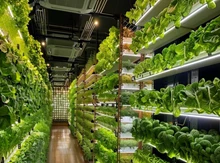
Groundwater is India's lifeline. It provides 85 percent of the drinking water supply in rural areas. Groundwater also provides around 65 percent of urban drinking water. Similarly, groundwater irrigates 65 percent of agricultural land and supplies 55 percent of industrial demand.
In light of the foregoing, there have been a number of noteworthy water conservation measures by farming communities across India in the previous year. This collection aims to bring some of them together by highlighting some of the most important water conservation measures implemented by Indian governments at the state and national levels.
At the conference last week in Rome, UN-Water decided that the subject for World Water Day 2022 will be "Groundwater: Making the Invisible Visible," as proposed by IGRAC. The 30th UN-Water summit was held in Rome, Italy, at the headquarters of the International Fund for Agricultural Development (IFAD).
Working extensively on-farm sustainability & techniques to optimize water use, efficiency, and conservation, as well as delivering solutions and knowledge that improve agricultural output and enrich the lives and livelihoods of farmers all over the world. Conducting a webinar with notable speakers from the industry to educate farmers on the Sustainable Use of Water in Agriculture will be a fantastic idea.
With this in mind, Krishi Jagran, in association with FMC India, is hosting a Webinar on 'World Water Day 2022' with the theme "Sustainable Use of Water in Agriculture." This session will begin at 3:00 PM on March 22nd, 2022.
Major Areas of Discussion:
-
Assess seasonal water availability - surface and groundwater- at the village level
-
Assess current & projected water demand for domestic, agricultural, livestock, and livelihood purposes
-
Match current water availability to demand
-
Choose crops and cropping patterns based on net water availability while keeping household food security and market (income) needs in mind
-
Introduce water-saving technologies such as drip irrigation, sprinklers, and mulching, and encourage more water harvesting
-
A shift from a supply-driven to a demand-side management approach











